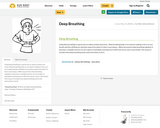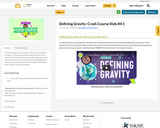These projects for grades 4-12 are designed to last 1-2 weeks.
The projects are cross-curricular and could be done via distance learning or in classrooms using technology.
Click the blue box that says "Start Teaching from the Catalog" to get started!
"These courses offer flexibility; you can start using a course immediately, or you can modify a course (adding content or changing the duration) to fit your context and need. See below for more details about the courses. We hope you'll be able to use them to support your students during distance learning.
-Your friends at the Deeper Learning Hub at HTH GSE"
They are currently free but this could change (if you are here and they are no longer free, please let go to the help centre (click your profile in the top right corner and select help centre) and add a ticket to let us know).
More From the Creators...
Want to learn more about the DL Hub Courses? Read on!
Who designed these courses?
"The DL Hub partnered with a talented group of instructional designers who built each project based course. Course designers work as High Tech High teachers, High Tech High Graduate School of Education faculty, and nationally recognized PBL consultants, and curriculum designers. More details about each course designer are available on the about page of each course.
How do I assign a course to my students?
To assign a course to your students, make a copy by clicking "Take With Your Own Group." You'll need to create a free Pathwright account so that you can tweak the course or add elements, and then invite your students to take the course.
Who can see my students' work?
The DL Hub is committed to protecting the privacy of student data. When a teacher makes a copy of a course they have created a private version of that course. Only the teacher and other students enrolled in the course will have access to the data. The agreement with our platform partner details that Pathwright ensures compliance with all applicable federal and California laws and regulations regarding collection and maintenance of student data, including, but not limited to, Children’s Online Privacy Protection Act (COPPA), Family Educational Rights and Privacy Act (FERPA), and California’s Student Online Personal Information Protection Act.
Can I use these courses to inspire my own curriculum?
Yes! We hope these courses can serve as a model of deeper learning through distance learning. Feel free to take inspiration from the courses and create your own curriculum that connects students to their learning in meaningful ways."






